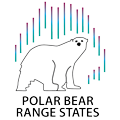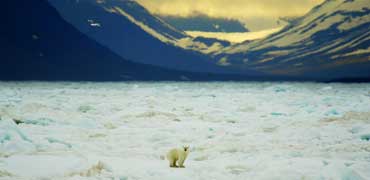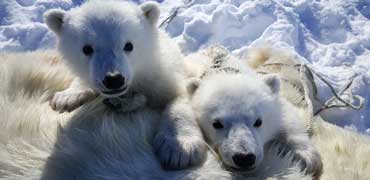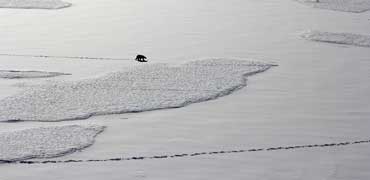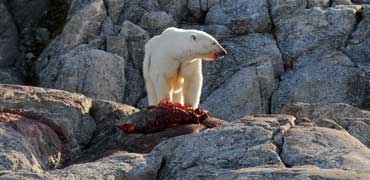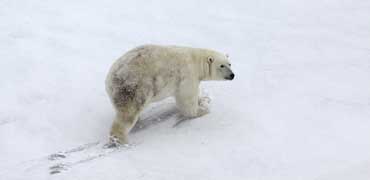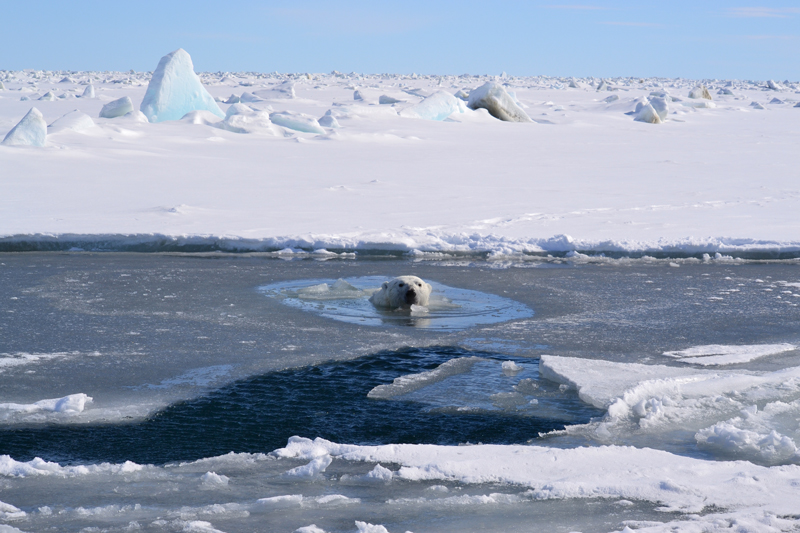 Photo credit: U.S. Fish and Wildlife ServiceGiven the large annual home ranges of polar bears, their habitat requirements vary both spatially and temporally. The PBSG defines essential habitat as “habitat of overall importance for the continuation of viable polar bear populations.” Using this definition, the PBSG has designated four separate classifications of essential habitat: feeding areas (sea ice over continental shelves and predictable terrestrial and coastal feeding sites), mating areas (sea ice over continental shelves), denning areas (terrestrial, multi-year and fast sea ice), migration patterns (areas connecting essential habitats) and summer refugia (both terrestrial and off-shore).
Photo credit: U.S. Fish and Wildlife ServiceGiven the large annual home ranges of polar bears, their habitat requirements vary both spatially and temporally. The PBSG defines essential habitat as “habitat of overall importance for the continuation of viable polar bear populations.” Using this definition, the PBSG has designated four separate classifications of essential habitat: feeding areas (sea ice over continental shelves and predictable terrestrial and coastal feeding sites), mating areas (sea ice over continental shelves), denning areas (terrestrial, multi-year and fast sea ice), migration patterns (areas connecting essential habitats) and summer refugia (both terrestrial and off-shore).
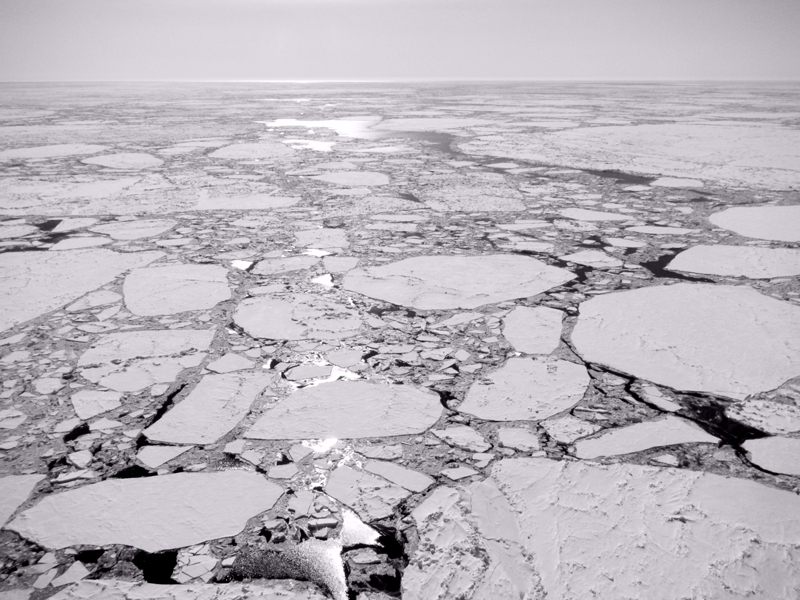 Photo credit: U.S. Fish and Wildlife ServicePolar bears frequent the southern edge of the multi-year pack ice of the Arctic Ocean and are commonly found in coastal areas and in the channels between the islands and archipelagos of the Arctic. The type and extent of the sea ice are the main factors that determine the quality of polar bear habitat. The sea ice is where the polar bear’s preferred prey, the ringed seal, lives for all or much of the year; hence, the distribution of bears in most areas follows the seasonal extent of the sea ice. Polar bear habitat varies with the season. In regions where much of the pack ice melts in mid-to-late summer, bears are forced onshore for two to five months, until freeze up. While on shore, bears primarily rely on their fat reserves due to a lack of available prey.
Photo credit: U.S. Fish and Wildlife ServicePolar bears frequent the southern edge of the multi-year pack ice of the Arctic Ocean and are commonly found in coastal areas and in the channels between the islands and archipelagos of the Arctic. The type and extent of the sea ice are the main factors that determine the quality of polar bear habitat. The sea ice is where the polar bear’s preferred prey, the ringed seal, lives for all or much of the year; hence, the distribution of bears in most areas follows the seasonal extent of the sea ice. Polar bear habitat varies with the season. In regions where much of the pack ice melts in mid-to-late summer, bears are forced onshore for two to five months, until freeze up. While on shore, bears primarily rely on their fat reserves due to a lack of available prey.
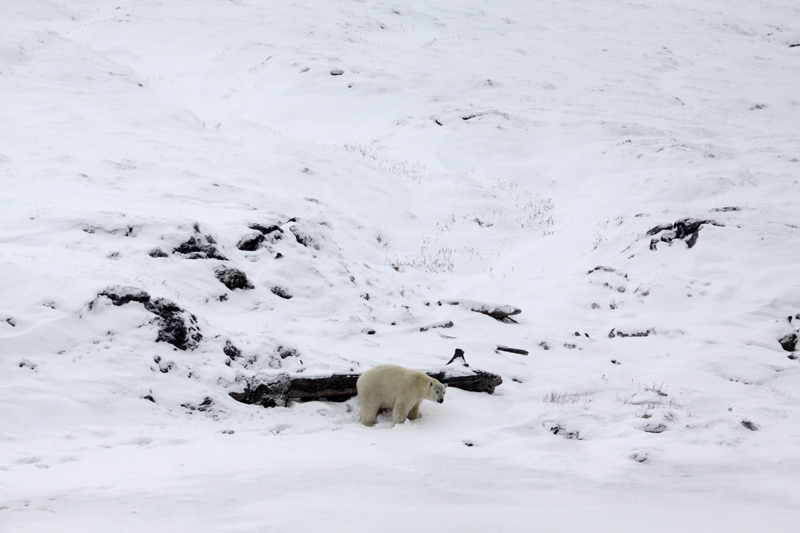 Photo credit: U.S. Fish and Wildlife ServiceIn late-autumn, pregnant females generally excavate maternity dens on land near the coast. Denning habitat is extremely diverse. Dens are dug in snowdrifts or, in areas farther south, in frozen earth or peat. In the Beaufort Sea area (Canadian and U.S. Arctic), a large proportion of polar bears have traditionally used multi-year ice over, or close to, productive prey denning areas. With a decline in multi-year sea ice in those areas, more bears now den on land. Den locations are very scattered over large areas. In Svalbard (Norwegian Arctic) and the eastern Russian Arctic, some islands with very rough topography allow large snow drifts to form even with low levels of precipitation, and bears may den at very high densities in such restricted areas. Good hunting areas in proximity to denning areas are of importance to female bears when leaving the dens with their cubs. Presence of sea ice is thus important. Likewise, in Svalbard (Norway), some remote islands need sea ice to be present in the autumn to allow bears to reach the denning area.
Photo credit: U.S. Fish and Wildlife ServiceIn late-autumn, pregnant females generally excavate maternity dens on land near the coast. Denning habitat is extremely diverse. Dens are dug in snowdrifts or, in areas farther south, in frozen earth or peat. In the Beaufort Sea area (Canadian and U.S. Arctic), a large proportion of polar bears have traditionally used multi-year ice over, or close to, productive prey denning areas. With a decline in multi-year sea ice in those areas, more bears now den on land. Den locations are very scattered over large areas. In Svalbard (Norwegian Arctic) and the eastern Russian Arctic, some islands with very rough topography allow large snow drifts to form even with low levels of precipitation, and bears may den at very high densities in such restricted areas. Good hunting areas in proximity to denning areas are of importance to female bears when leaving the dens with their cubs. Presence of sea ice is thus important. Likewise, in Svalbard (Norway), some remote islands need sea ice to be present in the autumn to allow bears to reach the denning area.
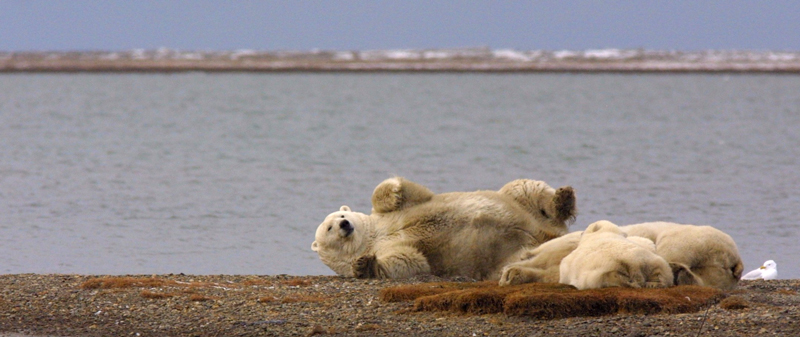 Photo credit: U.S. Fish and Wildlife ServiceDuring the winter, pregnant females remain sheltered in their den, while other bears are active on the pack ice. Polar bears of all sex and age classes may use dens as shelter during very harsh weather or to keep cool during the summer when on land. By altering the extent of the sea ice and the distribution of the seals that reproduce on the sea ice, climate warming will have an impact on the distribution of polar bears.
Photo credit: U.S. Fish and Wildlife ServiceDuring the winter, pregnant females remain sheltered in their den, while other bears are active on the pack ice. Polar bears of all sex and age classes may use dens as shelter during very harsh weather or to keep cool during the summer when on land. By altering the extent of the sea ice and the distribution of the seals that reproduce on the sea ice, climate warming will have an impact on the distribution of polar bears.
Source: Circumpolar Action Plan
